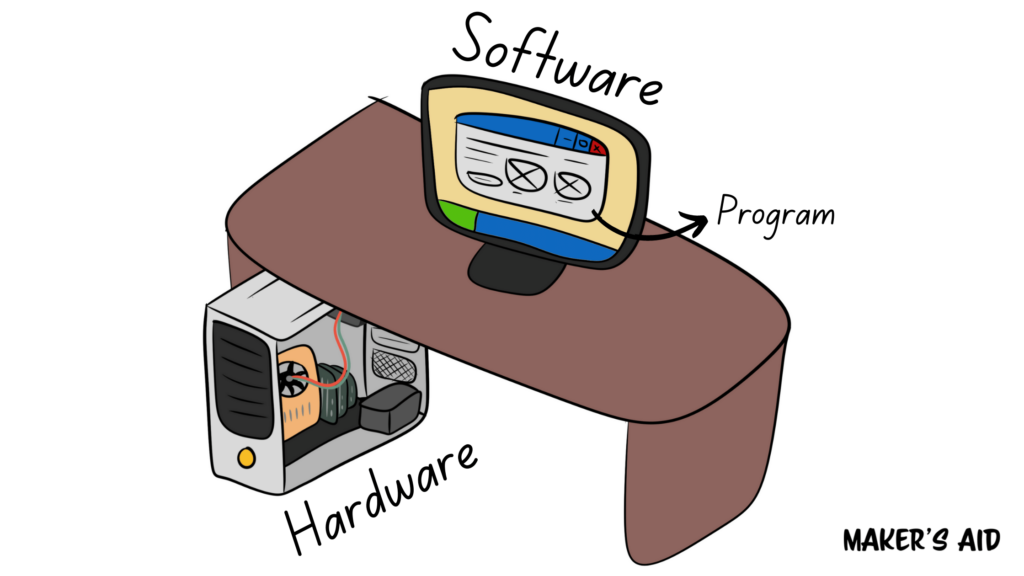Whether you’re new to computers or just beginning your studies in information technology (IT), you may be wondering about the proper definition of a computer program.
It’s good that you stopped by here. Because in a moment, we’re going to talk about what exactly a computer program is—and answer all the questions you didn’t know you had to ask.
For the definition of a computer program and more, read on below.
Definition of Computer Program
A computer program is a set of instructions that a computer must follow in order to perform one or more tasks. Programs can be written in a variety of programming languages and are usually designed for a specific operating system.
Some programs, like Windows Explorer, which lets you work with the files on your Windows PC, are only intended for one operating system. Others, like the graphics editor Adobe Photoshop, have a program for each operating system.
The web browser, media player, and text editor on your computer are all examples of computer programs.
Computer programs can have different licenses. Some are free, some are paid, and some are offered under a so-called freemium model with a free plan with restrictions and paid plans that unlock additional features.
Not all free programs can be used for commercial purposes, and not all paid programs allow every kind of commercial use. So if you want to use a program to do business or make money, whether directly or not, check its license first.
Programs vs. Software
Let’s talk about the difference between computer software and computer programs. And to understand that difference, we first need to zoom out a bit and take a minute or two to understand the terms “software” and “hardware.”
Hardware is an umbrella term for all the physical parts of a computer. Software, on the other hand, is for everything on a computer that can be seen or heard but not touched—specifically, the operating system and the programs installed on it.

A computer program is essentially a piece of software, also known as a software product.
Programs vs. Operating Systems
What’s the difference between an operating system and a program?
An operating system, such as Windows and macOS on computers or Android and iOS on phones and tablets, is the software that enables the basic functions of a computer chip-powered device—including installing and using programs.
A program, on the other hand, is a software product designed to perform a specific set of tasks. You install the program on your computer or mobile device’s operating system.
Programs vs. Apps
When Steve Jobs, the late founder of Apple, introduced the iPhone on June 29, 2007, he coined the term “apps,” short for “applications.”
From that moment on, people have come to think of the software that they install on their computers as “programs,” and the software they download to their phones and tables as “apps.”
Technically, however, apps and programs are two terms for the same thing—branded and packaged software that we download and install on one or more of our computer chip-powered devices.
Yes, they are intended for different types of devices with different operating systems, which also means they’re written in different languages, but categorically they’re still one and the same thing.
Programs vs. Scripts
A program is a software package that can be installed and run on a particular operating system. It can be thought of as a stand-alone software product that usually doesn’t require anything else to work.
A script is code written in a special kind of programming language, called a scripting language, that requires a computer program, called an interpreter, in order to be executed. Unlike programs, scripts have additional requirements to work.
A computer program can actually contain many scripts running in the background.
Programs vs. Commands
To give you the long story short, computer programs consist of commands—but commands alone are not necessarily computer programs.
A command is a single instruction given to a computer in a given programming language, like “Go to Folder A” or “Calculate the sum of x and y.”
A program is a set of commands ordered in a logical way, like “If Folder A exists, go to Folder A, create a list of all the files stored in it, and display that list to the user.”
Definition of Programming
To program is to write code in a programming language for the purpose of instructing computers, their operating systems, or other programs installed on them to perform specific tasks.
Professionals who program are called “computer programmers,” or simply “programmers.” A programmer is usually proficient in one programming language and is also familiar, to varying degrees, with one or more other languages.
What Is a Programming Language?
A programming language, much like a human language, consists of syntax and semantics for giving instructions to computers, their operating systems, or other programs installed on them.
As a general rule, there are three types of programming languages:
- Machine languages are the primary languages understood by computers. They consist of binary numbers—0s and 1s—which computers can understand.
- Assembly languages are known as “low-level languages.” They are close to machine languages but consist of more than binary numbers, making them easier for humans to read and write.
- High-level languages have almost nothing to do with machine languages. They are the easiest for humans to read and write, but, to become executable, their code needs to be translated into binary code for the computer.
Some programming languages, like C, C++, C#, and Java are intended for operating systems. Others, like PHP and JavaScript, are intended for the web. In recent years, the next generation of high-level programming languages, like Python, Go, and R, were created for the purposes of machine learning and data science.
Can Anyone Learn a Programming Language?
Yes, anyone can learn a programming language. As long as, that is, they invest the time and effort required to understand and master its syntax (the formatting rules) and semantics (the words and meanings).
Some programming languages are easier to understand than others, especially for beginners. Machine languages are the most difficult because they require a deep knowledge of computer engineering. Assembly languages are the second most difficult, and high-level languages are the easiest of the three.
So start with a high-level programming language. If you’re wondering whether to start, many consider Python to be the easiest programming language to learn thanks to its simplicity and versatility.
Get started: The Best Python Programming Language Books for Beginners
Why Do Computers Need Programs?
Computers are machines that follow instructions. And programs are what give them those instructions. Without computer programs, computers can’t do much.
Your computer starts running programs from the moment you turn it on—the BIOS, which provides services to the operating system, the operating system, which provides services to the software you’ve installed on it, and so on.
And it doesn’t stop running programs until it’s completely shut down. So computer programs and the programmers who create them are what turn a computer from an expensive metal box into a functional and highly useful machine.
Who Wrote the First Computer Program?
Not everyone knows that the first computer program was written in the 1840s, a century before the invention of the first computing machine.
And it was written by none other than Ada Lovelace—Countess of Lovelace, 19th-century mathematician, intellectual, and daughter of the famous English poet George Gordon Byron.
Between 1842 and 1843, Ada Lovelace translated an article by Italian military engineer Luigi Menabrea on the “Analytical Engine” and supplemented it with a series of detailed notes, which she called simply “Notes.”
Lovelace’s notes are significant to the early history of computer science because they contain what many consider to be the first computer program, that is, an algorithm designed to be executed by a machine.
Is Programming Computer Science?
Computer science is the study of computers, cutting-edge technology, hardware engineering, and software development. Computer programming is only one of the practical applications of computer science.
This means that a computer scientist isn’t really a programmer, just like a programmer isn’t really a computer scientist.
Computer scientists are academics who develop a broad knowledge of how computers and the ecosystems that they power; programmers are practitioners who develop specialized knowledge of programming languages that enable them to instruct computers.
The websites of the computer science department at Rice College and at Rasmussen College have two good articles on the differences.

